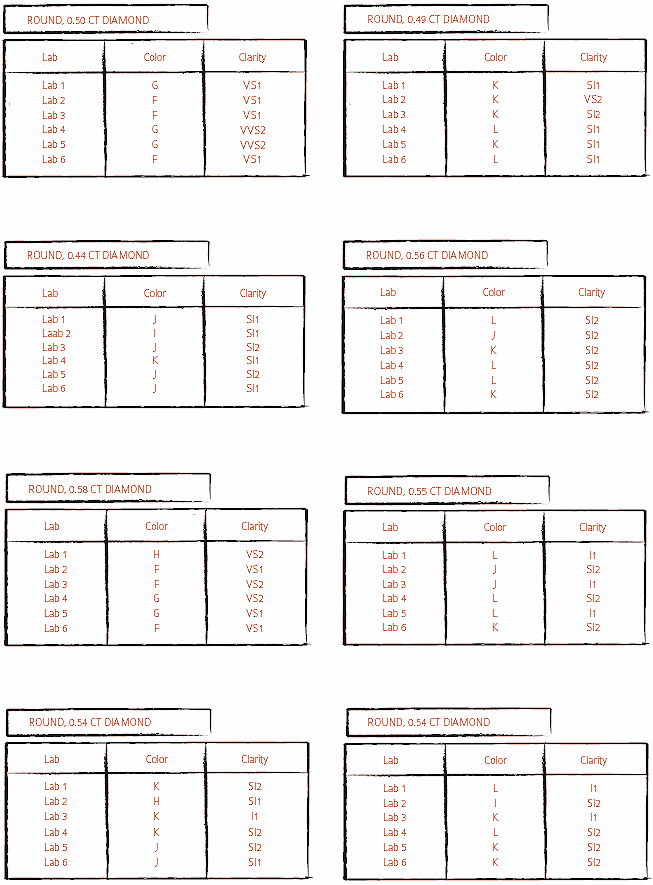Labs: The Equal Opportunity Test
July 13, 08
By Edahn Golan
It is well known In the Industry that labs grade differently. The truth is that the diamond industry does not have a global, unified set of grading standards. While the very first steps to a standardization of diamond grading are being taken, currently each lab can decide for itself what, for example, qualifies for a k color grade. But just how different can they really be?
 |
IDEX Magazine decided to find out just how far these differences stretched. To do so, we submitted ten diamonds to six labs for grading, where each lab graded them according to their own standards. The results make for very interesting reading. At times the results varied slightly; in others they varied widely (if not wildly).
The diamonds we submitted weighed 0.443 - 0.654 carats, all round cut and generally in the VS1 - I1 clarity range, colors D - L. We say “generally,” because this is the range that most diamond dealers would say these diamonds fell into if they did not have a lab certificate in front of them.
The goods were each submitted to GIA, HRD, IGI, AGS, EGL and EGL USA. For the purpose of this test we are only comparing color and clarity. These six labs represent the majority of the global trade in certified diamonds, probably well over 80 percent of all certified polished diamonds. A check of the certified stones listed on IDEX Online shows that 99.05 percent are certified by one of these six labs.
We are not disclosing which results came from which lab. We are demonstrating that they indeed differ. In the process of submitting diamonds to a lab, there are a couple of considerations in addition to the actual results: cost and time. Even when it comes to the cost of grading a diamond, there are no standards – as seen in the first table. The cost of a certain certification must inevitably play a part in a diamantaire’s decision about where to send a particular stone, though we make no assumptions about this choice process. The second factor that diamantaires must take into account is turnaround time. A diamond that is in a lab is not “working,” and a diamond that is in a lab for an extended period of time is not “working” for many days. The results show that with some labs, the turnaround was quick – just a matter of a few business days – and as promised. In the case of one of the labs, the turnaround time, including shipping from Israel to Antwerp and back, was an excruciating 27 days, although the lab promises results in only ten days.
  |
What did we find?
Since color grading is carried out by and large by people and not by machine, we expected to find variations. However, the degree of variation was even greater than expected. The tables speak for themselves, but there are a couple of results that we feel compelled to point out. While most color grading in our test varied by one or two color grades, in one instance, a 0.541 carat stone got a grading ranging from H to K – a four color grading range difference. Another, a 0.539 carat stone, was I on the high side and L on the low. They were not alone, as you will see.
Conclusions
Although we ran this test with a small number of goods, and therefore cannot claim that the results meet strict statistical analysis, they are a good sample of diamonds in terms of what is often submitted for grading. The wide disparity certainly underlines the inconsistency in grading between labs in general and in color grading in particular. The numbers speak for themselves, and we leave it up to you to draw your own conclusions. Diamond dealers, it seems, have a wide choice of popular labs in terms of color and clarity, as well as cost and the resulting premiums. Many of them no doubt know how to use it to their advantage.
How did we test the diamonds?
We collected ten diamonds and with the help of two diamond traders we submitted the diamonds to each of the six labs, one after another. We did not protest any of the results and, for the sake of time and cost, only asked for preliminary results where labs provided that service. We would like to thank the companies that helped us by providing the diamonds, their time and effort to perform this test.